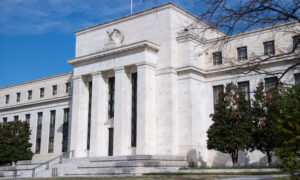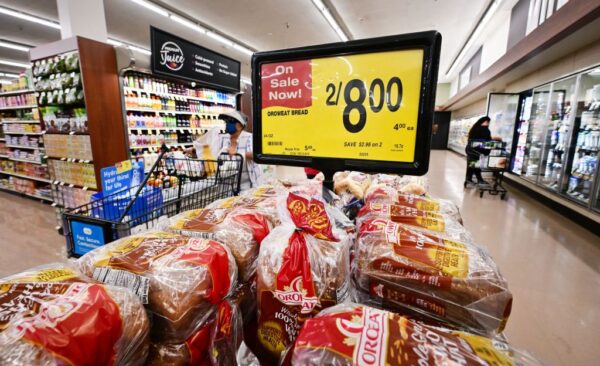Mixed Stats Muddy the Waters
CommentaryFor all the debate over and ambiguity in recent statistics, the U.S. economy can only be described as weak. Economic pessimists claim it is already in recession, pointing to the last two consecutive quarters of declining real gross domestic product (GDP). The White House and members of the Democratic Party are, for obvious political reasons, loath to make such a concession. They cling to a more technical definition of recession formulated by the venerable National Bureau of Economic Research (NBER) and point to historically strong hiring rates to claim that there is more economic strength than meets the eye. Though there is ammunition for both optimists and pessimists, the balance of data points to economic weakness, if not yet outright recession. Moreover, the broader picture points strongly to recession on the horizon and relatively soon because of inflation and the Federal Reserve’s (Fed) imposition of more restrictive monetary policies to fight inflation. Job growth offers the most significant support for economic optimists. The Labor Department’s July survey of employers showed a striking 526,000 expansion in payrolls, while the August survey showed a smaller but impressive gain of 315,000. These are not record increases, but they are nonetheless beyond most historical experience and far beyond where consensus expectations were. Behind these impressive tallies, however, other aspects of the Labor Department’s report suggest less strength. The department’s separate survey of households indicated a jobs gain of 626,000 in July and August, a good showing historically but far short of the payroll increases from the employers’ survey that have been emphasized by the White House and much of the media. Also, the unemployment rate rose to 3.7 percent of the workforce in August, above July’s 3.5 percent rate and even June’s 3.6 percent. Some of this increase resulted from an otherwise encouraging increase in the number of people looking for work, but it nonetheless points to the beginnings of slack. Meanwhile, average weekly hours worked has remained flat since June at 34.5 and remains below numbers from earlier in the year. From this, it would seem that employers are hiring less to expand output than to relieve earlier needs to work people overtime. Outside the Labor Department’s accounting, there are, of course, the first and second quarter declines in real GDP. Weakness also comes through in declining measures of consumer confidence. Though the Conference Board’s measure showed a modest uptick in August, it failed to overcome the earlier declines and remains 10 percent below last December’s level. Reporting by the Institute of Supply Management (ISM) showed no gain in August after a 5.5 percent drop in July, hardly a signal of strength. This list is, of course, far from complete, but it is nonetheless indicative. People shop at a supermarket in Montebello, Calif., on Aug. 23, 2022. U.S. shoppers are facing increasingly high prices on everyday goods and services as inflation continues to surge with high prices for groceries, gasoline, and housing. (Frederic J. Brown/AFP/Getty Images) Apart from the mix of recent statistics, two other considerations weigh heavily on the economy’s prospects. One is the ongoing inflation. At last measure, for August, the consumer price index (CPI) rose 8.3 percent from year-ago levels. Though down from June highs, this kind of unacceptable price pressure seems likely to persist. In themselves, these inflation rates are sufficient to impair economic growth prospects by eroding business and consumer confidence, as well as discouraging the savings and investments on which economic growth ultimately depends. These effects could bring on recession all on their own. It certainly would not be the first time in history that inflation did so. A more potent recessionary threat emerges from the Fed’s fight against inflation. This effort began last March. Earlier, it had pursued a pro-inflationary monetary policy. It had kept short-term interest rates near zero and poured new money into financial markets by buying bonds directly—mostly Treasurys and mortgages—what the Fed refers to as “quantitative easing.” But since March, the Fed has begun to drain money from financial markets by selling the hoard of bonds it had previously acquired and pushing up short-term interest rates by some 1.75 percentage points. These standard anti-inflation moves also restrain economic activity. Moreover, the Fed seems determined to take further steps along these lines in the coming weeks and months—a pattern that will make recession still more likely. If this assessment is correct—and it seems likely—the statistics on which the White House and other optimists rely will soon turn against their view. The evidence of economic weakness, if not outright recession, will become overwhelming. Whether this resolution of the economic picture takes place in the next month or two remains uncertain.

Commentary
For all the debate over and ambiguity in recent statistics, the U.S. economy can only be described as weak. Economic pessimists claim it is already in recession, pointing to the last two consecutive quarters of declining real gross domestic product (GDP).
The White House and members of the Democratic Party are, for obvious political reasons, loath to make such a concession. They cling to a more technical definition of recession formulated by the venerable National Bureau of Economic Research (NBER) and point to historically strong hiring rates to claim that there is more economic strength than meets the eye.
Though there is ammunition for both optimists and pessimists, the balance of data points to economic weakness, if not yet outright recession. Moreover, the broader picture points strongly to recession on the horizon and relatively soon because of inflation and the Federal Reserve’s (Fed) imposition of more restrictive monetary policies to fight inflation.
Job growth offers the most significant support for economic optimists. The Labor Department’s July survey of employers showed a striking 526,000 expansion in payrolls, while the August survey showed a smaller but impressive gain of 315,000. These are not record increases, but they are nonetheless beyond most historical experience and far beyond where consensus expectations were.
Behind these impressive tallies, however, other aspects of the Labor Department’s report suggest less strength. The department’s separate survey of households indicated a jobs gain of 626,000 in July and August, a good showing historically but far short of the payroll increases from the employers’ survey that have been emphasized by the White House and much of the media.
Also, the unemployment rate rose to 3.7 percent of the workforce in August, above July’s 3.5 percent rate and even June’s 3.6 percent. Some of this increase resulted from an otherwise encouraging increase in the number of people looking for work, but it nonetheless points to the beginnings of slack.
Meanwhile, average weekly hours worked has remained flat since June at 34.5 and remains below numbers from earlier in the year. From this, it would seem that employers are hiring less to expand output than to relieve earlier needs to work people overtime.
Outside the Labor Department’s accounting, there are, of course, the first and second quarter declines in real GDP. Weakness also comes through in declining measures of consumer confidence. Though the Conference Board’s measure showed a modest uptick in August, it failed to overcome the earlier declines and remains 10 percent below last December’s level. Reporting by the Institute of Supply Management (ISM) showed no gain in August after a 5.5 percent drop in July, hardly a signal of strength. This list is, of course, far from complete, but it is nonetheless indicative.

Apart from the mix of recent statistics, two other considerations weigh heavily on the economy’s prospects. One is the ongoing inflation. At last measure, for August, the consumer price index (CPI) rose 8.3 percent from year-ago levels. Though down from June highs, this kind of unacceptable price pressure seems likely to persist.
In themselves, these inflation rates are sufficient to impair economic growth prospects by eroding business and consumer confidence, as well as discouraging the savings and investments on which economic growth ultimately depends. These effects could bring on recession all on their own. It certainly would not be the first time in history that inflation did so.
A more potent recessionary threat emerges from the Fed’s fight against inflation. This effort began last March. Earlier, it had pursued a pro-inflationary monetary policy. It had kept short-term interest rates near zero and poured new money into financial markets by buying bonds directly—mostly Treasurys and mortgages—what the Fed refers to as “quantitative easing.”
But since March, the Fed has begun to drain money from financial markets by selling the hoard of bonds it had previously acquired and pushing up short-term interest rates by some 1.75 percentage points. These standard anti-inflation moves also restrain economic activity. Moreover, the Fed seems determined to take further steps along these lines in the coming weeks and months—a pattern that will make recession still more likely.
If this assessment is correct—and it seems likely—the statistics on which the White House and other optimists rely will soon turn against their view. The evidence of economic weakness, if not outright recession, will become overwhelming. Whether this resolution of the economic picture takes place in the next month or two remains uncertain. Still, it is hardly likely that today’s ambiguities will remain in place much longer.
Views expressed in this article are the opinions of the author and do not necessarily reflect the views of The Epoch Times.












